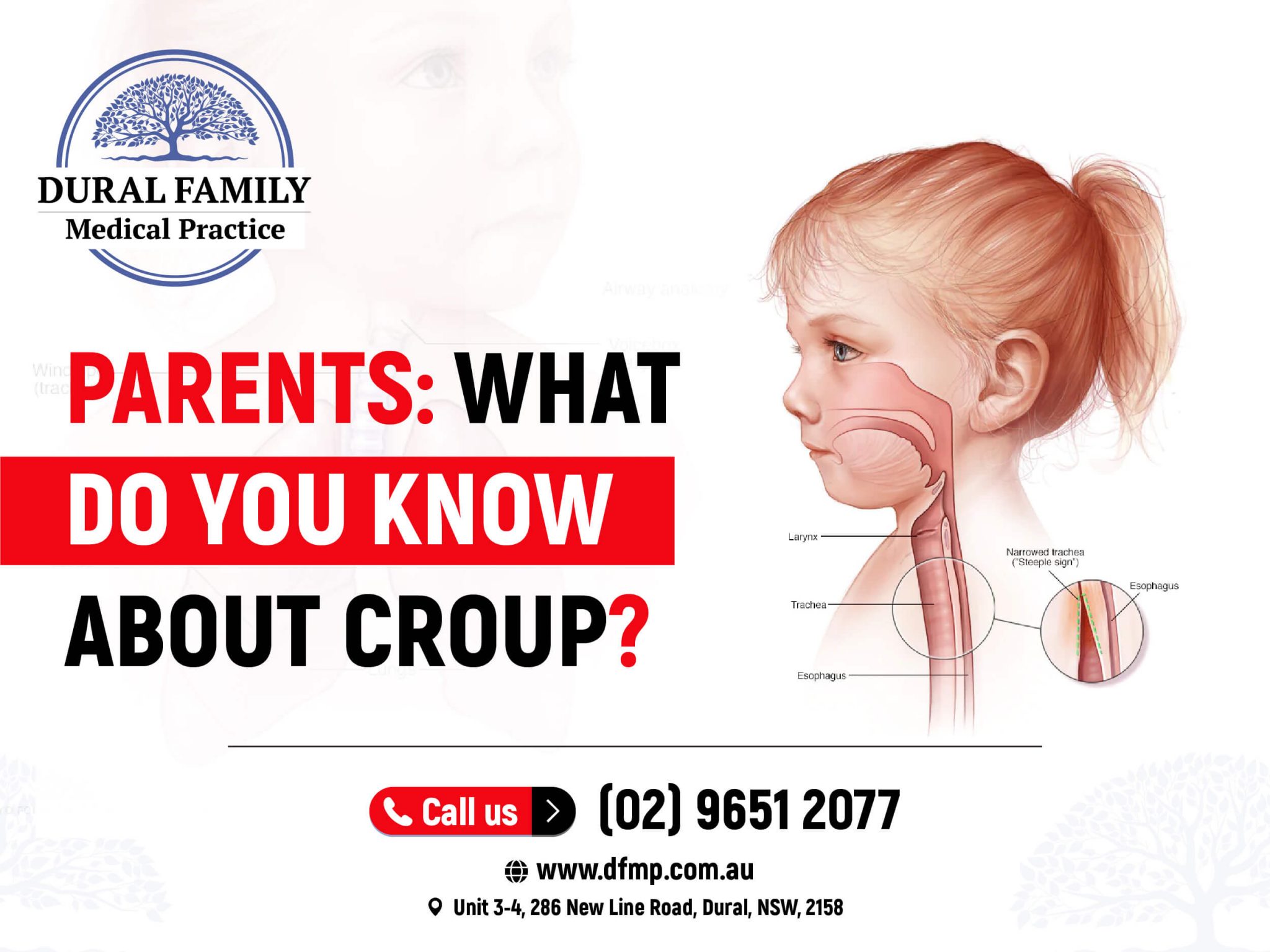same day & urgent walk-in appointments are available
(02) 9651 2077
3-4/286 New Line Road, Dural NSW 2158
OPENING HOURS
Monday
Tuesday
Wednesday
Thursday
Friday
Saturday
Sunday and Public Holidays
After Hours Phone Contact
8:00am - 6:00pm
8:00am - 6:00pm
8:00am - 6:00pm
8:00am - 6:00pm
8:00am - 6:00pm
8:30am - 12:00pm
Closed
137 425
Parents: What do you know about Croup?
It’s 3AM, and the temperature is dropping. You’re woken up to the sound of your child coughing violently, with a barking-like sound. Your little one looks like he/she is struggling to breathe

It’s 3AM, and the temperature is dropping. You’re woken up to the sound of your child coughing violently, with a barking-like sound. Your little one looks like he/she is struggling to breathe. What do you do next?
What is Croup?
Croup, or laryngotracheobronchitis is a condition affecting the upper airways (Larynx, Trachea). It’s due to a viral infection causing inflammation of the large airway structures. Inflammation of these areas lead to swelling and narrowing, which in turn can affect air entry into the lungs.
What Age does Croup affect?
Generally this condition affects children between the ages of 6 months to 6 years old.
What are the Symptoms and Signs of Croup?
Croup will begin like a cold; with symptoms of cough, runny nose and fever. The character of the cough will often then change to a harsh and barking cough. It is typically described as a “seal bark.”
As the symptoms worsen, your child’s voice may sound hoarse, there may be high pitched breathing noises called stridor, or there may also be signs of increased work of breathing (with each inspiration, skin between the ribs and above the breast bone get sucked in).
Croup usually develops suddenly at night time, and gets worse around day 2-3 of the illness. Symptoms can last several days, and the cough can remain longer after the acute illness.
When should my child see the doctor?
– If your child is under 6 months old
– has stridor, ie high pitched breathing in sounds
– if you notice chest wall changes – skin sucking in between ribs/ above the breast bone
– if symptoms are not improving or getting worse
– if you have any concerns or you’re simply not sure.
Importantly, should any of the following be observed, you should immediately call an ambulance on 000: If you notice your child is struggling to breathe, development of blue discolouration of the lips, drooling or difficulty swallowing, or becoming pale or drowsy.
What is the Treatment for Croup?
Treatment will depend on what the findings are from the history taken, and the physical examination. Most cases of mild croup will be successfully treated with thorough symptomatic treatment, similar to the treatment of a common cold or viral upper respiratory tract infection.
More progressed or moderate cases of croup may require a dose or course of oral corticosteroid medications (such as RediPred liquid). These are prescribed medicines that can help open up and relax the airways.
Severe croup or a child displaying signs of respiratory distress may need to be sent immediately to the local Emergency Department.
This article was written by General Practitioner, Dr Udara Gunawardane (BMedSci (Hons) MD, DCH, FRACGP).
Dr Udara joins the team at Dural Family Medical Practice with extensive experience in family medicine and children’s health, with additional training holding a Graduate Diploma in Child Health. Please note that Dr Udara bulk bills all children under 12 years of age.
